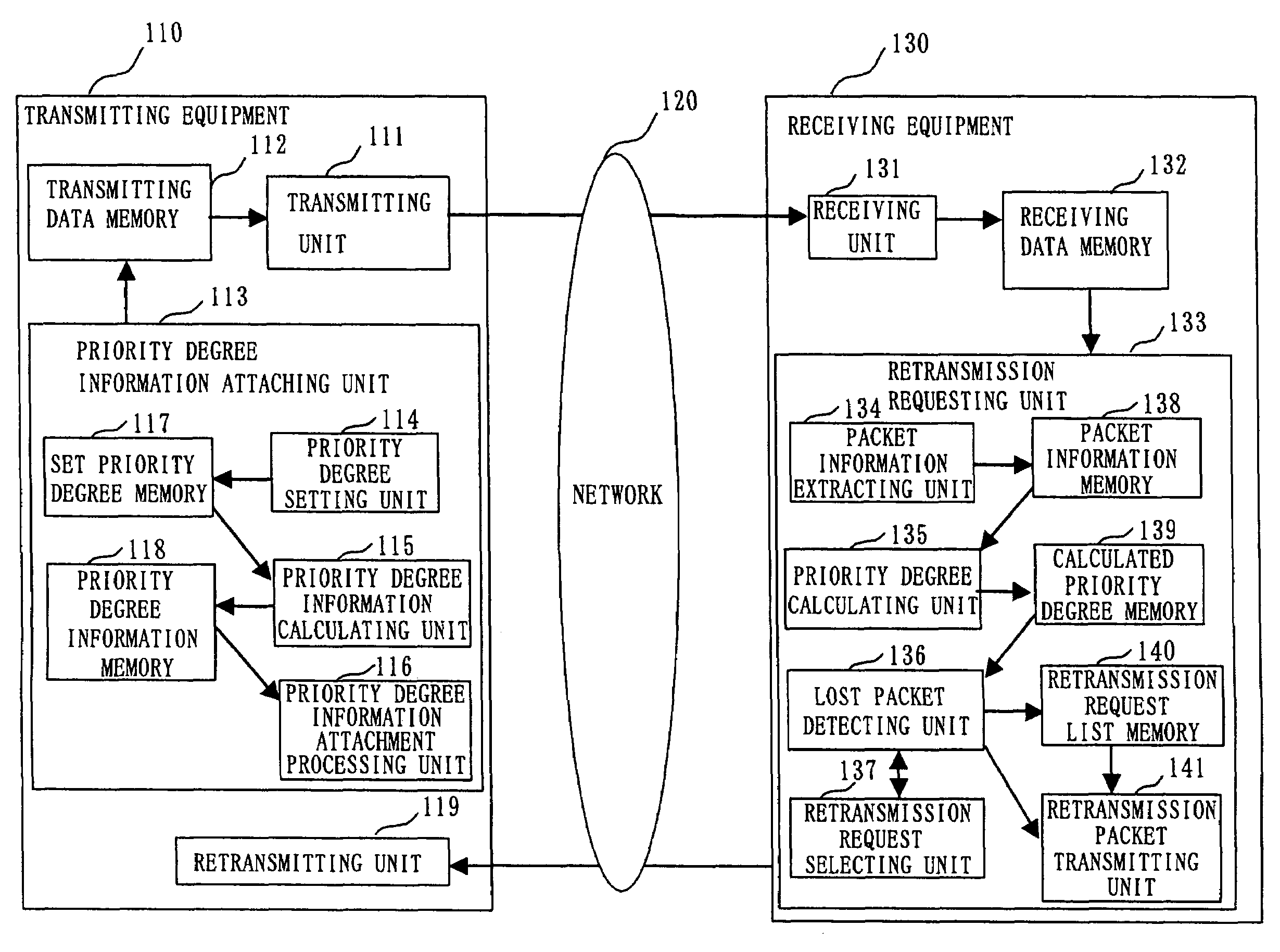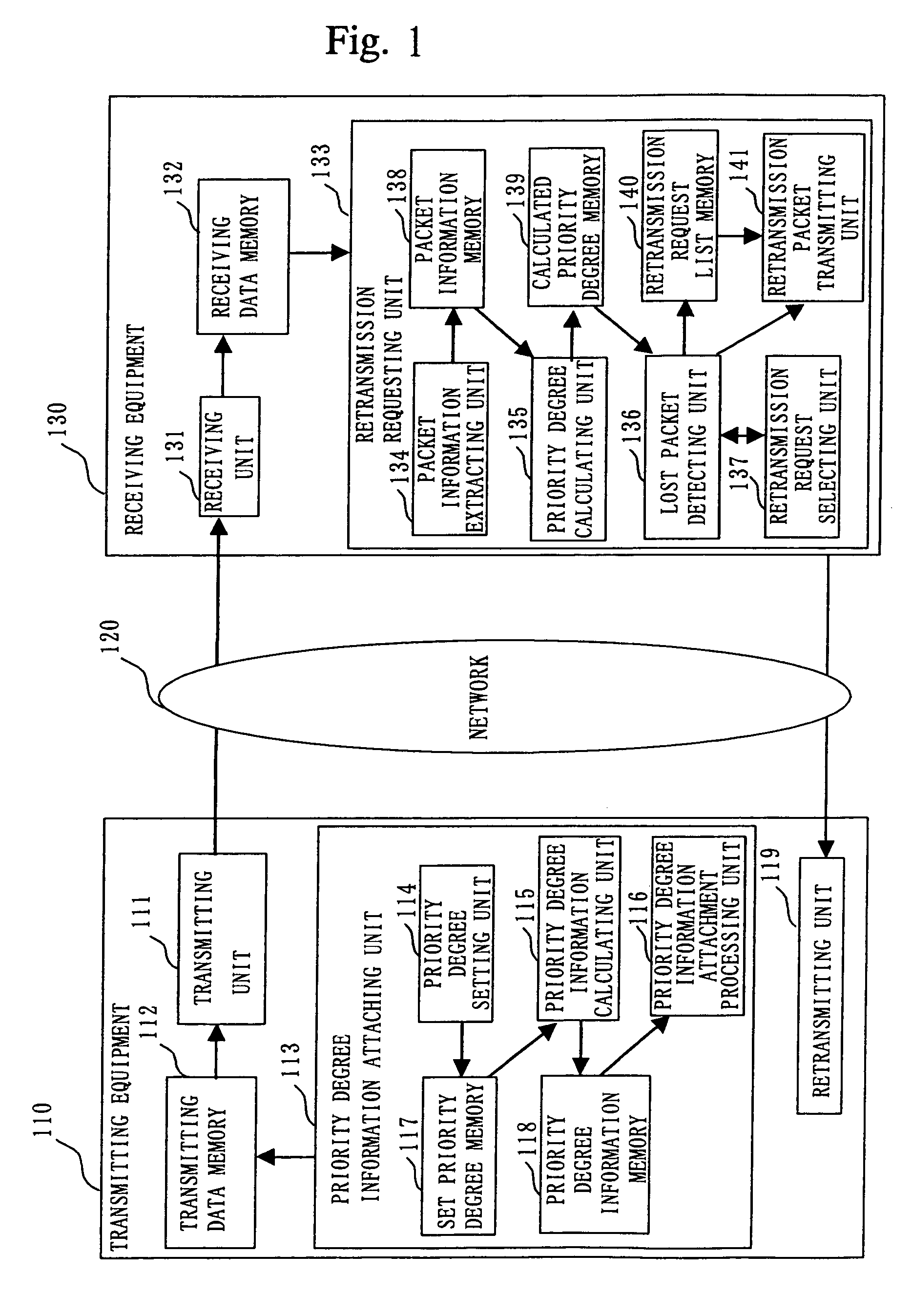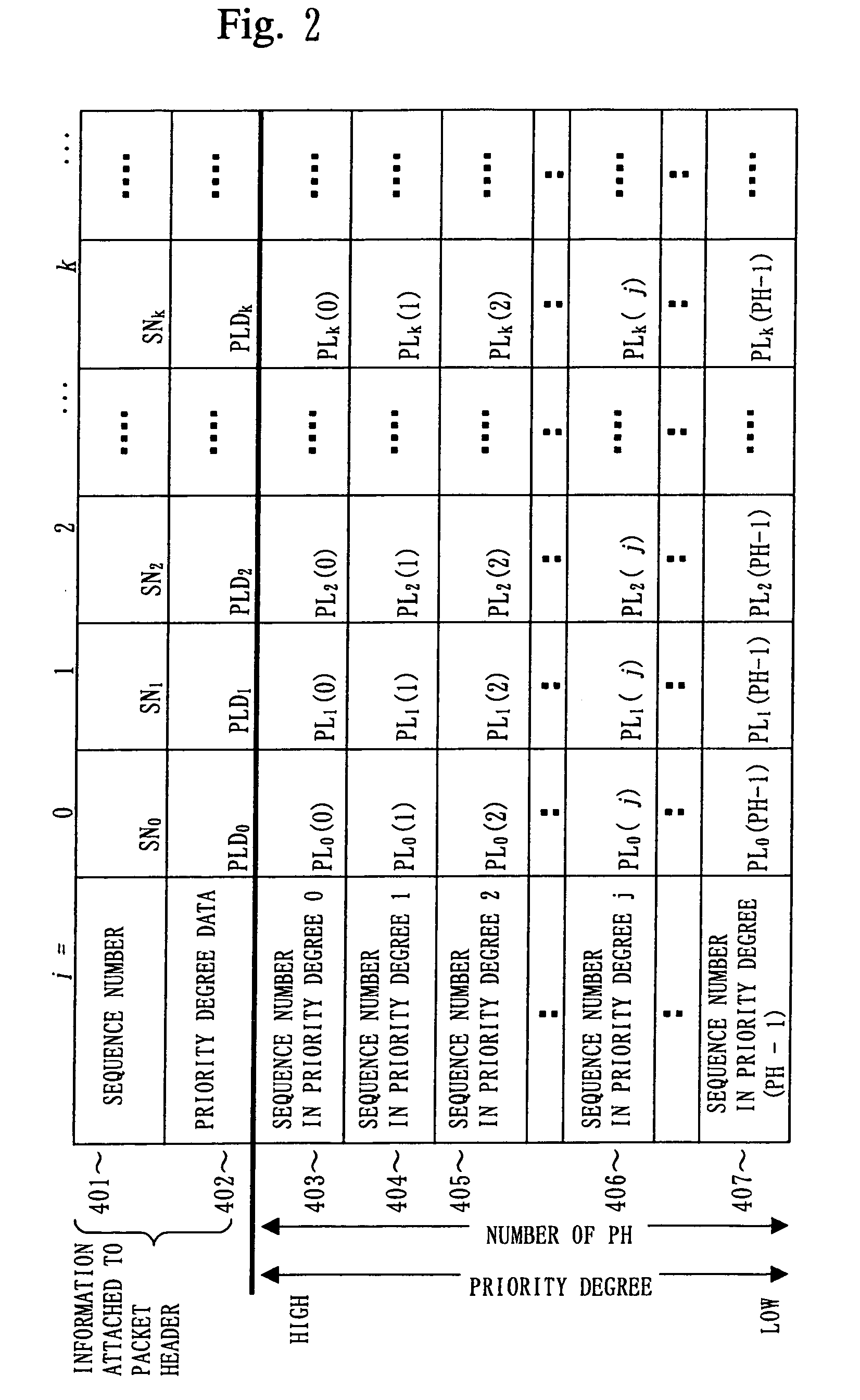Packet retransmission system, packet transmission device, packet reception device, packet retransmission method, packet transmission method and packet reception method
a packet retransmission and packet technology, applied in digital transmission, data switching networks, instruments, etc., can solve the problems of often lost packets in networks and performing useless retransmission processing
- Summary
- Abstract
- Description
- Claims
- Application Information
AI Technical Summary
Benefits of technology
Problems solved by technology
Method used
Image
Examples
embodiment 1
[0110]In this embodiment, an example in case of PH=2 is explained.
[0111]FIG. 4 shows a flow chart of an example of the operations by the transmitter in Embodiment 1. FIG. 5 shows a flow chart of an example of the operations by the receiver in Embodiment 1.
[0112]This shows a sequence of a packet which is being processed among packets to be sent.
[0113]The transmitter calculates PLDi (PLD of the i-th packet) from the packet with i=0, and transmits the packet. At first, when the transmitter receives the retransmission request packet (Yes in 603), the retransmitting unit 119 retransmits the packet of which retransmission is requested (604). In the retransmission request packet, PL of each of priority degrees, which is desired to be retransmitted, is written. For example, information of requesting a packet with PL(0)=5, 6 and PL(1)=4 is written in the retransmission request packet. The retransmission request packet can be in any configuration as far as the PL for requesting the retransmis...
embodiment 2
[0143]In Embodiment 2, a case of calculating the priority degree data so that the value of the PLD becomes smaller than Embodiment 1 is explained.
[0144]In the receiver, the priority degree data PLD are treated as PLD=SN×Q+R. Q is a quotient of PLD / SN, and R is a remainder of 3. Values of Q and R are also set smaller for each of the packets.
[0145]In the following explanation, explanations are made by using an equation of PLD=SN×Q+R.
[0146]At first, setting of the value of Q is explained. Variables A, B and C calculated in the following equation are defined.
[0147]A=|PLD(N−1)−PL(N)|, B=|SN−PLD(N−1)|, C=|SN−PL(N)|, and a minimum value among A, B and C is defined as Q. Further, an identifier PQ for identifying which value among three values is defined as Q, and displayed in 2 bits for example.
[0148]In case of Q=PL(0), i.e., same as Embodiment 1, PQ=00.
[0149]In case of Q=A, PQ=01.
[0150]In case of Q=B, PQ=10.
[0151]In case of Q=C, PQ=11.
[0152]Further, since A, B and C are absolute values of ...
embodiment 3
[0196]In Embodiments 1 and 2, a case of PH=2 was explained as an example. However, even when PH is larger than 2, this packet retransmitting system can be applied.
[0197]For example, in FIG. 7, PL is specified in case of PH=1≠2. However, for specifying the PL in case of PH=3≠4, another row of format data of a last line is added. In case of PH=5≠6, another row is further added. Information on the PL for requesting the retransmission is added.
PUM
 Login to View More
Login to View More Abstract
Description
Claims
Application Information
 Login to View More
Login to View More - R&D
- Intellectual Property
- Life Sciences
- Materials
- Tech Scout
- Unparalleled Data Quality
- Higher Quality Content
- 60% Fewer Hallucinations
Browse by: Latest US Patents, China's latest patents, Technical Efficacy Thesaurus, Application Domain, Technology Topic, Popular Technical Reports.
© 2025 PatSnap. All rights reserved.Legal|Privacy policy|Modern Slavery Act Transparency Statement|Sitemap|About US| Contact US: help@patsnap.com



